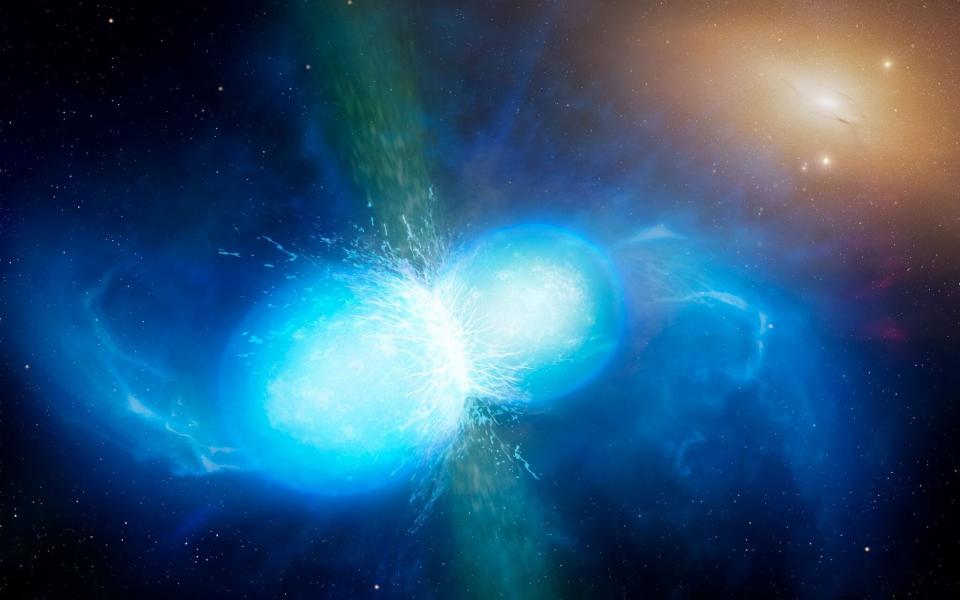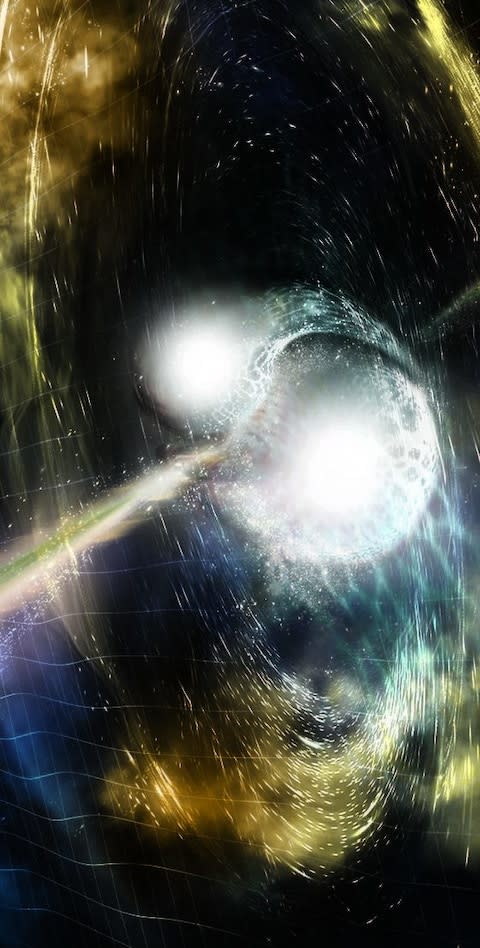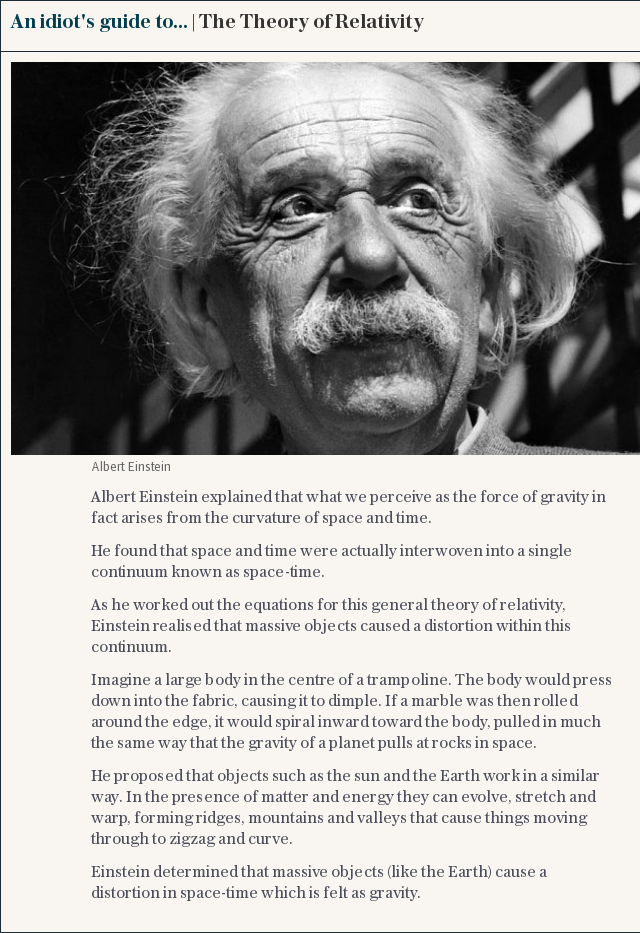Secret of gold finally found: precious metals are forged in cataclysmic collision of neutron stars

The secret of creating gold has fascinated alchemists for thousands of years, but now scientists have finally solved the mystery.
Precious metals are forged in the cataclysmic collision of neutron stars and then flung out into the universe where they eventually aggregate with other stardust into larger bodies, like planets or comets.
Previously scientists had theorised that such cosmic smashes could create the vast amount of energy needed to create gold, platinum and silver, but for the first time, they have actually recorded it happening.
On August 17, astronomers in the US picked up a signal from two neutron stars crashing together 130 million years ago, when dinosaurs still roamed the Earth.
The impact, known as a ‘kilanova’ was so powerful that it shook not only space but also time, sending ripples - or gravitational waves - through the fabric of the universe.

After the ripple was detected on Earth, astronomers across the world pointed their telescopes to the area of space from which it had originated and soon also picked up the bright afterglow from the collision. Inside that light were the distinct chemical signatures for gold, silver and platinum.
Dr Joe Lyman, of the University of Warwick, who was observing at the European Southern Observatory, in Germany, was the first to alert the scientific community to the fact they were witnessing a completely new event.
“The observations showed we were observing a kilonova, an object whose light is powered by extreme nuclear reactions,” he said.
“This tells us that the heavy elements, like the gold or platinum in jewellery, are the cinders, forged in the billion degree remnants of a merging neutron star.”
Neutron stars are created when giant stars die in spectacular supernovas. Their cores collapse, allowing protons and electrons to meld together to form neutrons, creating small yet incredibly dense stars. Just a teaspoon of neutron star material would have a mass of about a billion tons.
The two stars which were detected in August were as heavy as our Sun, yet only six miles (10km) across. They existed in a galaxy called NGC 4993.
The pair drew towards each other over millions of years, and revolved around each other increasingly quickly as they got closer – eventually spinning around each other five hundred times per second, until they crashed, forming either a larger neutron star or collapsing into a black hole.

The spacetime ripples created by the collision were detected by the Advanced Laser Interferometer Gravitational-Wave Observatory in Washington and Louisiana (Ligo). It was here the first discovery of gravitational waves was made in September 2015, confirming a prediction made by Albert Einstein 100 years ago and
earning three pioneers of the project a Nobel Prize.
In that instance, black holes collided so only the ripples were detected because everything else was swallowed inside. But neutron stars are relatively lighter than black holes, so when they collide and merge, a small part of their mass and radiation does escape and can be detected along with gravitational waves.

Professor David Wiltshire, Department of Physics & Astronomy, University of Canterbury, said: “The first discovery of gravitational waves from the merger of two neutron stars is an historic event.
“It is every bit as exciting as the first discovery of gravitational waves from merging black holes. Since this involves neutron stars that radiate light, for the first time we can also see what is going on in an extreme astronomical event that shakes up space-time.”
Dr J.J. Eldridge, astrophysicist at the University of Auckland, added: “We’re all made of stardust, but gold, silver and platinum are made of neutron stardust.
“In this particular event, it’s likely that 100s or 1000s of Earth masses of gold and other elements were made. If the rate of neutron stars mergers is as high as we now think, these dying stars are now the source of most of these elements in the universe.”
The discovery has also solved the mystery of what creates short wave gamma ray bursts which are picked up on Earth and could help pinpoint how fast the universe is expanding.
Dr Samantha Oates, of Warwick’s Astronomy and Astrophysics group added: “This discovery has answered three questions that astronomers have been puzzling for decades: what happens when neutron stars merge? What causes the short duration gamma-ray bursts? Where are the heavy elements, like gold, made? In the space of about a week all three of these mysteries were solved.”
The new findings were published in research papers in the journals Nature, Nature Astronomy and Science.

 Yahoo News
Yahoo News 